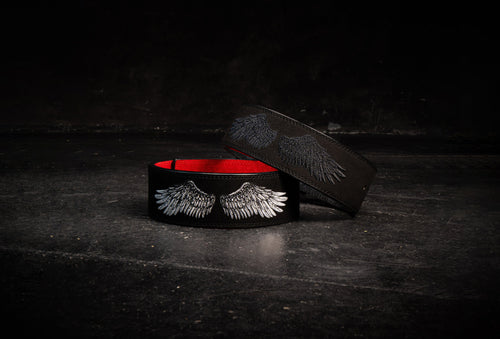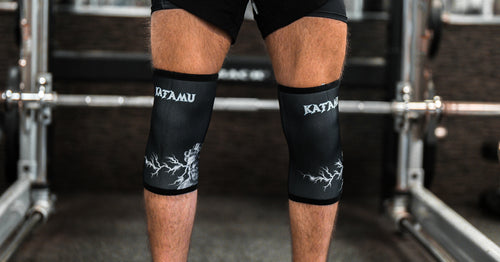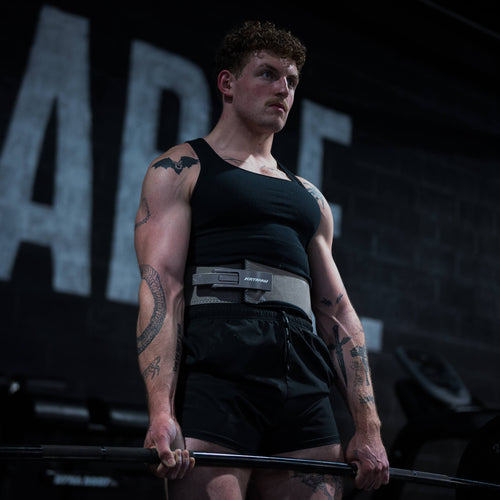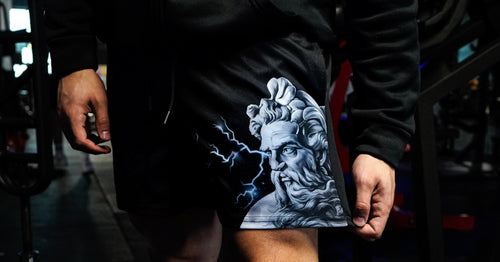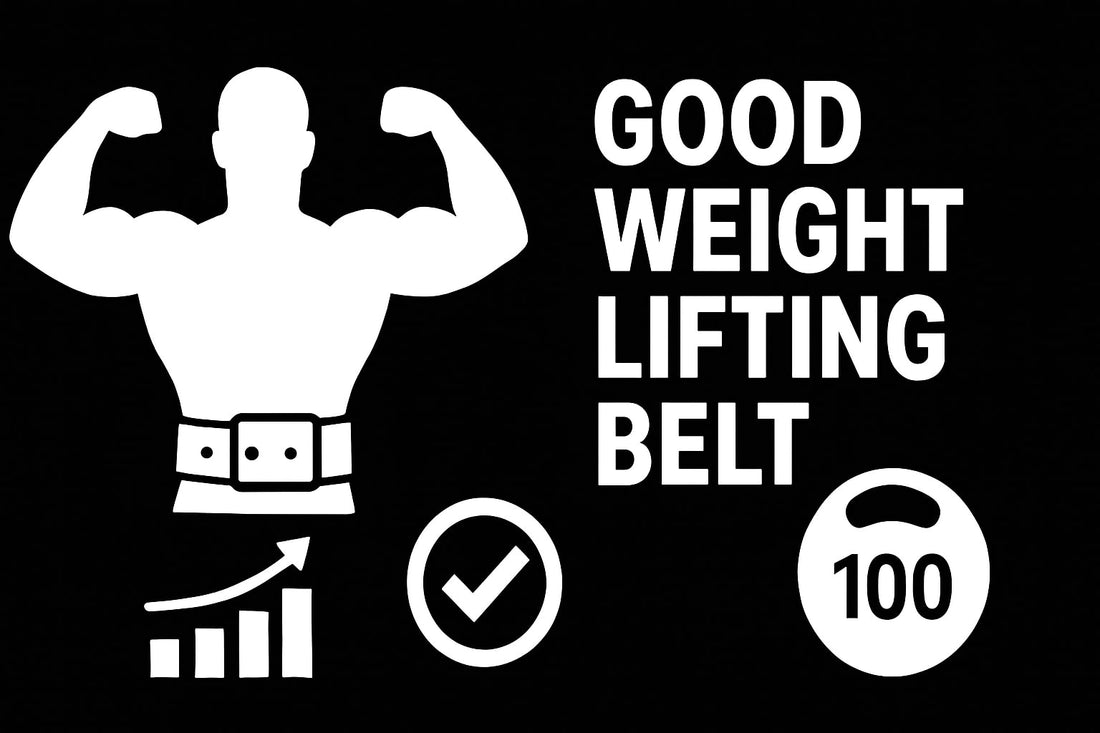Strength training is exploding in popularity as we head into 2025, and the gear you choose can make or break your progress. With more people chasing bigger lifts, the risks of lifting without proper support are higher than ever. That is where a good weight lifting belt steps in, offering not just protection but also a noticeable boost in performance.
A good weight lifting belt helps stabilize your core, letting you push heavier weights while staying safe and confident. Whether you are a beginner or a seasoned athlete, using the right belt can be the difference between hitting new personal records and facing unnecessary injuries.
In this guide, you will discover the 9 best weight lifting belts for 2025, each chosen to meet different goals, budgets, and lifting styles. Get ready to find the perfect fit for your strength journey.
Why a Good Weight Lifting Belt Matters in 2025
A good weight lifting belt is more than just a gym accessory in 2025. For anyone serious about progress and safety, it is a vital tool that supports strength, form, and injury prevention. Today’s belts are engineered for a new era of lifters, blending technology, science, and style to meet diverse needs.
Enhanced Performance and Safety
Wearing a good weight lifting belt can make a significant difference in both performance and protection. By increasing intra-abdominal pressure, a belt stabilizes the spine, enabling lifters to handle heavier loads with better control. Research, such as this study on weightlifting belts and deadlift performance, shows belts can reduce perceived exertion and improve lifting mechanics. Powerlifters often break personal records when using a good weight lifting belt, highlighting its role in boosting confidence and reducing injury risk. For those aiming to lift safely and efficiently, the right belt is a game-changer.
Evolving Training Trends and Gear Innovation
The fitness landscape is evolving rapidly, and so is the demand for a good weight lifting belt. Hybrid athletes, CrossFit enthusiasts, and recreational lifters now expect gear that is versatile, stylish, and technologically advanced. Recent innovations include antimicrobial linings that keep belts fresh, contoured designs for a perfect fit, and lever mechanisms for quick adjustments. These upgrades ensure a good weight lifting belt not only supports the body but also matches the user’s style and the dynamic pace of modern training.
Who Should Use a Lifting Belt?
A good weight lifting belt is no longer reserved for elite powerlifters. It is recommended for powerlifters, bodybuilders, Olympic lifters, and anyone committed to lifting heavy weights. Even beginners can benefit from a good weight lifting belt when approaching near-maximal loads, especially during squats, deadlifts, and overhead presses. Experts advise that using a belt at the right time supports progress and helps build safe lifting habits. Whether you are chasing your first deadlift PR or just want extra support, a good weight lifting belt is a smart investment.
Key Features to Look for in 2025
Choosing a good weight lifting belt in 2025 means considering several key features. Material is crucial; leather offers maximum support, while nylon provides flexibility and comfort. Thickness and width affect stability and fit, and closure types—lever, prong, or Velcro—cater to different preferences for speed and adjustability. Adjustability, comfort, and durability are top priorities. Design trends include aesthetic customizations and limited editions, allowing lifters to express their personality while enjoying the functional benefits of a good weight lifting belt.
9 Essential Good Weight Lifting Belt Picks for 2025
Choosing a good weight lifting belt can be a game-changer in your training journey. With so many options on the market, it's easy to feel overwhelmed. That's why we've handpicked the nine best belts for 2025, each tailored to different needs, budgets, and lifting styles. Whether you're a seasoned powerlifter or a weekend warrior, this guide will help you find the perfect fit for your goals.
1. Katamu Co Lever Belt – Premium Design & Durability
The Katamu Co Lever Belt is a standout choice for anyone seeking a good weight lifting belt that blends style, durability, and support. With options for 10mm or 13mm thickness, this belt uses premium leather and a robust lever mechanism, ensuring it meets the needs of serious lifters and casual gym-goers alike.
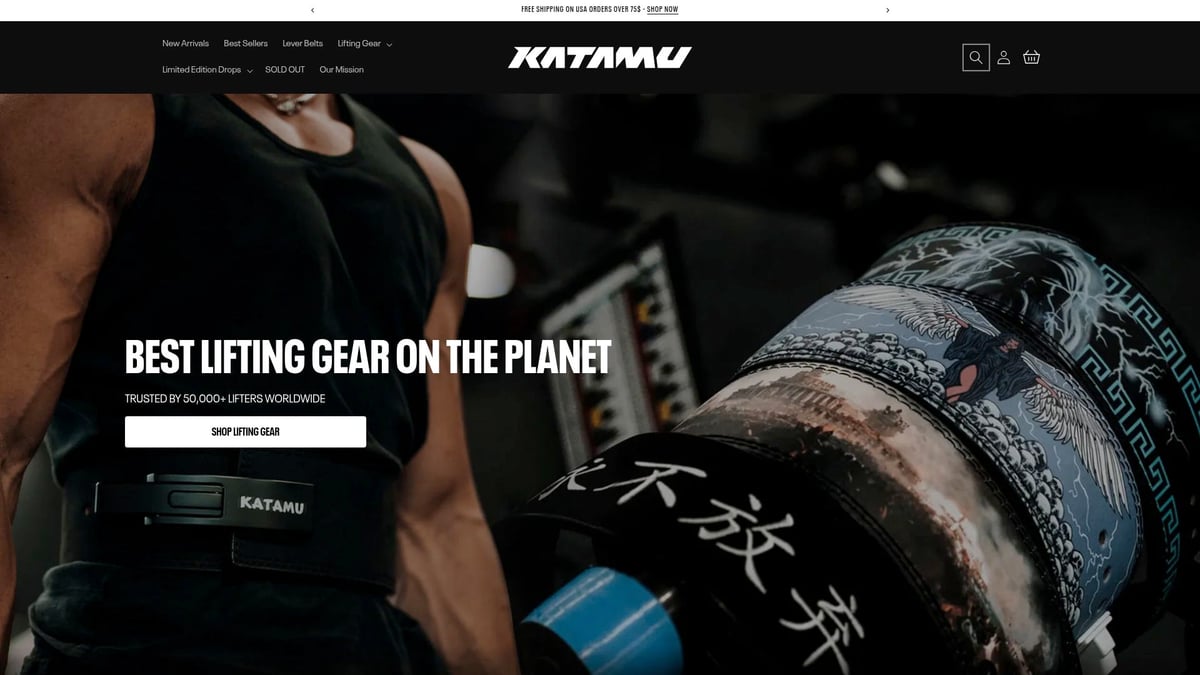
What sets Katamu Co apart is their commitment to artistic, limited edition designs. You can express your personality while staying safe during heavy lifts. The wide size range means everyone can find a secure, comfortable fit. The lever closure allows for quick tightening or release, which is especially valuable during intense training sessions.
Pros include exceptional lumbar support, long-lasting construction, and a generous 30-day money-back guarantee. The price is a bit higher than basic belts, but frequent discounts and bundle deals help offset the cost. For those who want a good weight lifting belt that stands out visually and functionally, Katamu Co is a top contender.
2. Rogue Ohio Lifting Belt – Classic American Craftsmanship
The Rogue Ohio Lifting Belt is a staple in the world of strength training. Crafted from 10mm vegetable-tanned leather, this single-prong belt is made in the USA and trusted by countless professional powerlifters. If you’re searching for a good weight lifting belt with a proven track record, this one delivers.
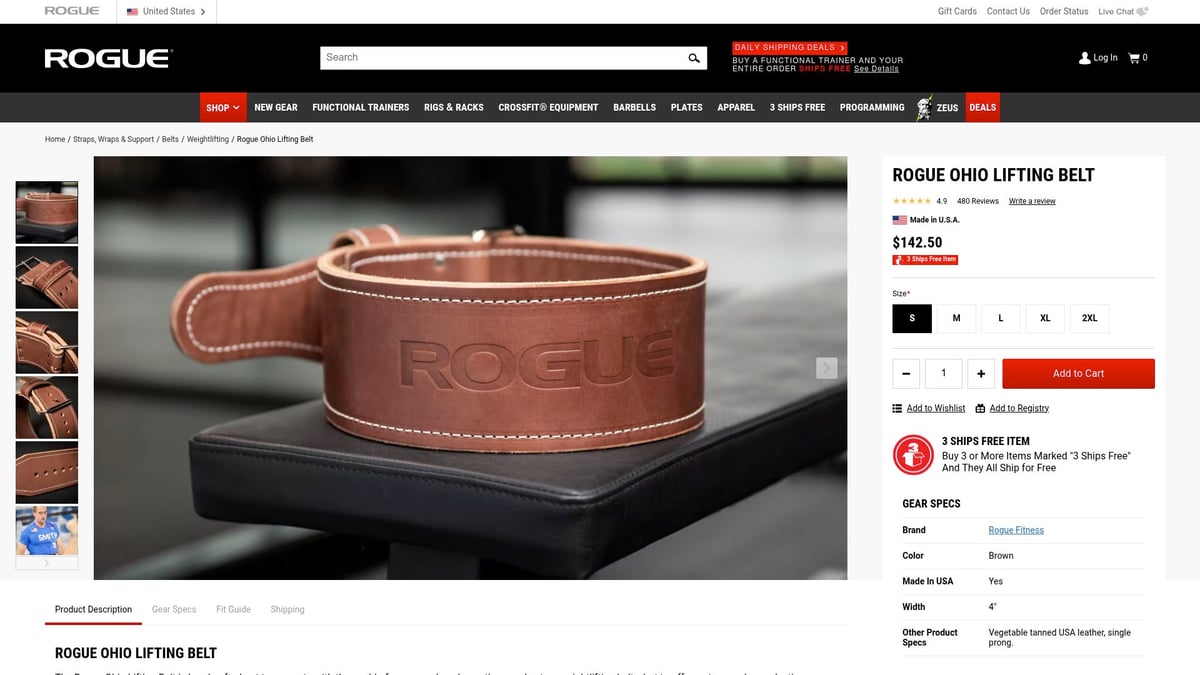
It breaks in quickly, offering a balance of comfort and robust support. The high-quality leather molds to your body over time, while the simple prong closure ensures reliable performance during heavy lifts. Although color and design options are limited, the classic look appeals to traditionalists.
This good weight lifting belt is perfect for those who value quality over flash. Rogue’s reputation for reliable equipment means you can count on this belt to last through years of tough workouts. The price is mid-range, making it a smart investment for committed athletes.
3. SBD 13mm Lever Belt – Elite Powerlifting Support
For lifters who demand maximum support, the SBD 13mm Lever Belt is the gold standard. This good weight lifting belt is IPF-approved, making it a favorite among competitive powerlifters worldwide.
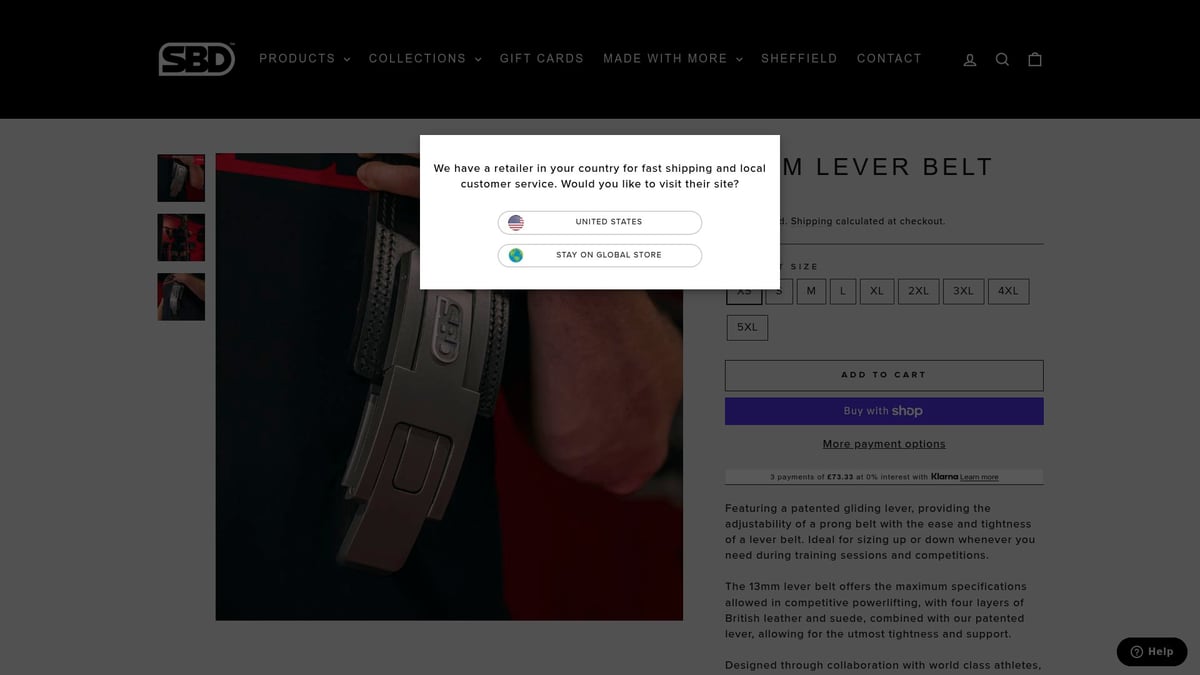
Its 13mm black oiled leather construction provides unmatched core stability, allowing you to safely push your limits on squats and deadlifts. The patented lever mechanism ensures a secure fit, and the belt’s durability means it will hold up through years of intense use.
While the price is on the premium side, you get what you pay for in terms of performance and build quality. Beginners may find it a bit stiff at first, but advanced lifters will appreciate the uncompromising support. If you’re serious about breaking records, this good weight lifting belt is a worthy investment.
4. Dark Iron Fitness Genuine Leather Pro Belt – Budget-Friendly Quality
The Dark Iron Fitness Genuine Leather Pro Belt is ideal for lifters who want a good weight lifting belt without breaking the bank. Priced affordably, it features 4mm thick genuine buffalo hide leather and a comfortable double prong closure.
Despite its lower price, this belt doesn’t skimp on quality. It’s lightweight, flexible, and comes with a lifetime replacement guarantee. Customer service is a key highlight, offering peace of mind for your purchase. While it’s thinner than competition belts, it’s perfect for beginners and intermediates who aren’t maxing out every session.
This good weight lifting belt is best for budget-minded shoppers or those just starting their strength journey. It delivers solid support for most lifts and is easy to break in, making it a practical addition to any gym bag.
5. Gymreapers Quick Locking Nylon Belt – Versatile & Lightweight
CrossFitters and functional fitness fans will appreciate the Gymreapers Quick Locking Nylon Belt. This good weight lifting belt is designed for versatility, featuring a quick-locking buckle and a 4-inch nylon build that’s machine washable and easy to adjust during workouts.
It stands out for its lightweight feel and flexibility, making it comfortable for high-rep or dynamic movements. Multiple color options let you match your style, while the affordable price point is a bonus for anyone on a budget. While it’s less rigid than leather, it still offers solid core support for Olympic lifts and metcon workouts.
If you’re after a good weight lifting belt that adapts to various training styles, Gymreapers is a smart choice. It’s not intended for max powerlifting, but for most everyday athletes, it gets the job done.
6. Pioneer Cut Powerlifting Belt – Custom Fit Innovation
The Pioneer Cut Powerlifting Belt is a top pick for those seeking a good weight lifting belt with unmatched adjustability. Its patented Pioneer Cut design features 1/2" hole spacing, allowing for ultra-precise fit adjustments.
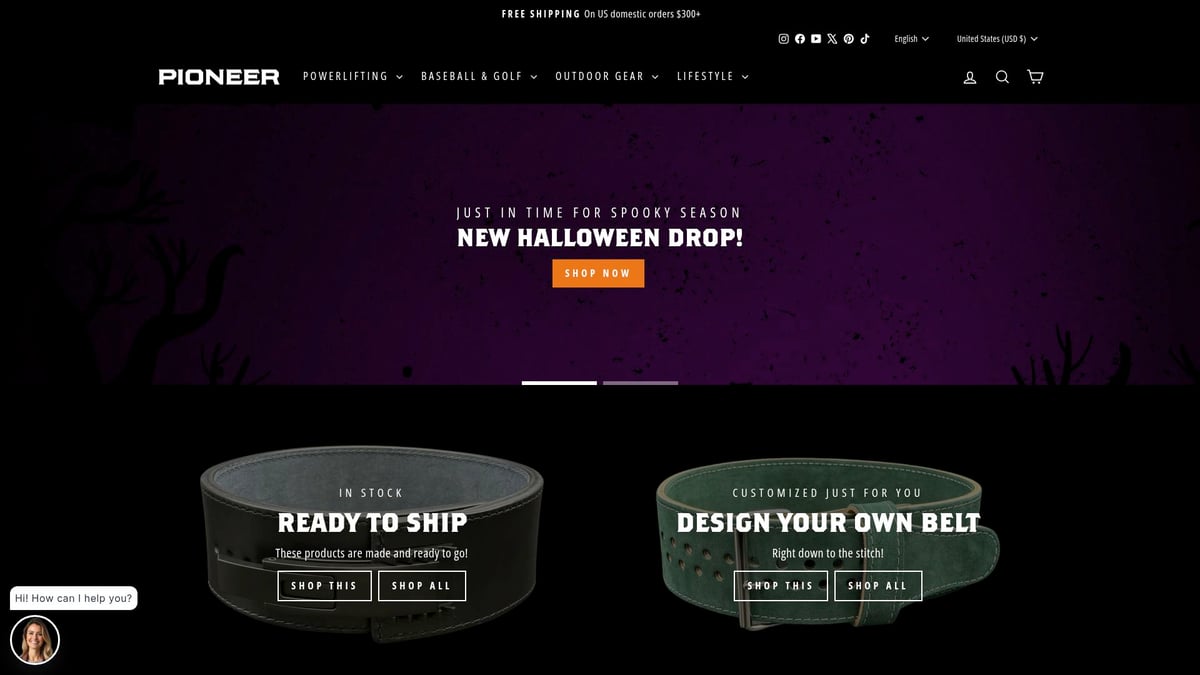
Available in both 10mm and 13mm thickness options, this hand-crafted belt can be customized in color and size. The comfort and support it delivers are ideal for lifters with fluctuating waist sizes or those who want a tailored experience.
Pros include a lifetime warranty and innovative design, while the main downside is potential wait time for custom orders. For athletes who want a good weight lifting belt that feels like it was made just for them, Pioneer is hard to beat.
7. Inzer Forever Lever Belt – Legendary Durability
The Inzer Forever Lever Belt lives up to its name, offering legendary durability and support. This good weight lifting belt comes in 10mm or 13mm thickness and features a lever closure for fast, secure adjustments.
Constructed from a single piece of premium leather, the Inzer Forever is trusted by world record holders and hardcore powerlifters. It’s built to last, with a lifetime guarantee backing up its robust reputation. The main drawback is a stiff break-in period, but once molded to your body, it offers unbeatable stability.
This good weight lifting belt is heavier than some alternatives, but if you want a belt that will outlast countless training cycles, Inzer is a wise choice.
8. Element 26 Self-Locking Weightlifting Belt – Modern Functional Design
Element 26’s Self-Locking Weightlifting Belt is a modern, functional choice for athletes who value convenience and comfort. As a good weight lifting belt, it features a self-locking buckle and 100% nylon build with a uniform 4-inch width, making it competition-legal and easy to use.
The lightweight design suits Olympic lifters and functional fitness athletes who need quick transitions and reliable support. It’s USAPL-approved, so you can use it confidently in sanctioned meets. While it’s not as supportive as thick leather belts, its comfort and secure fit make it a favorite for dynamic training.
Element 26 proves that a good weight lifting belt doesn’t have to be bulky or complicated to deliver results.
9. Harbinger Padded Leather Belt – Comfort First
Harbinger’s Padded Leather Belt is designed for lifters who put comfort above all else. This good weight lifting belt uses a contoured design and foam padding to provide gentle lumbar support, making it an excellent choice for casual gym-goers or anyone sensitive to rigid belts.
The double prong closure ensures a snug fit, while the affordable price and wide availability make it accessible to most athletes. Although it’s less suitable for elite powerlifting, the padding and contour help prevent chafing and discomfort during longer sessions.
If you’re looking for a good weight lifting belt that’s easy on the back and wallet, Harbinger is a solid option.
Quick Comparison Table
| Belt Name | Material | Thickness | Closure | Price Range | Ideal Use |
|---|---|---|---|---|---|
| Katamu Co | Leather | 10/13mm | Lever | $139–$179 | All-around, stylish |
| Rogue Ohio | Leather | 10mm | Prong | $135–$150 | Powerlifting |
| SBD 13mm Lever | Leather | 13mm | Lever | $265–$285 | Elite powerlifting |
| Dark Iron Fitness | Buffalo leather | 4mm | Double prong | $49.99–$59.99 | Beginners, budget |
| Gymreapers Nylon | Nylon | 4" width | Quick-lock | $34.99–$44.99 | CrossFit, functional |
| Pioneer Cut | Leather | 10/13mm | Prong | $129–$169 | Custom fit, all levels |
| Inzer Forever | Leather | 10/13mm | Lever | $109–$139 | Powerlifting |
| Element 26 | Nylon | 4" width | Self-lock | $34.97–$49.97 | Olympic, functional |
| Harbinger Padded | Leather w/ foam | N/A | Double prong | $39.99–$49.99 | Comfort, casual |
Want to explore even more options or browse the full range of good weight lifting belt models? Check out the Weightlifting Belt Product Range for detailed specs, user reviews, and the latest releases.
How to Choose the Right Weight Lifting Belt for Your Needs
Choosing the right gear can make a huge difference in your lifting journey. Whether you're new to strength training or a seasoned athlete, picking a good weight lifting belt is not about guesswork. It's about matching your needs, style, and goals to the right features for safety and performance.
Assess Your Training Goals and Lifting Style
Start by asking yourself: what are you lifting, and how often? A good weight lifting belt should match your main lifts and training frequency. Powerlifters or those chasing new personal records typically prefer thick, sturdy belts for maximum support during squats and deadlifts. CrossFit athletes or Olympic lifters often choose lighter, more flexible belts for dynamic movements and speed.
If you’re still unsure, check out this How to Choose a Lifting Belt guide for deeper insights. Remember, your training style will directly guide your belt choice, so take a moment to reflect on your goals before you buy.
Sizing and Fit: Getting It Right
A good weight lifting belt is only effective if it fits you properly. Take a precise waist measurement at your navel, not your pant size. Brands and models differ, so always consult the sizing chart before you order. Some belts offer custom sizing or extra adjustability, which is perfect if your weight fluctuates or you want a tailored fit.
If you’re between sizes, opt for the smaller one for a snug fit. A belt that’s too loose or too tight won’t provide the support you need. Investing time in finding your exact size will ensure you get the most out of your good weight lifting belt.
Material Breakdown: Leather vs. Nylon
The material of your good weight lifting belt impacts its durability, rigidity, and comfort. Leather belts deliver maximum support and last for years, making them ideal for heavy powerlifting. They do require a break-in period, but their longevity is unmatched. Nylon belts, on the other hand, are lightweight, flexible, and often machine washable, making them great for functional fitness and quick adjustments.
Here’s a quick comparison:
| Material | Durability | Support | Comfort | Flexibility |
|---|---|---|---|---|
| Leather | High | Max | Medium | Low |
| Nylon | Medium | Moderate | High | High |
Choose the material that best fits your comfort needs and lifting style.
Closure Types: Lever, Prong, Velcro
The closure system affects both security and convenience in a good weight lifting belt. Lever closures are popular for quick on/off and consistent tightness, making them a favorite for powerlifters. Prong closures (single or double) allow small adjustments and are known for reliability. Velcro closures are convenient, lightweight, and easy to adjust, perfect for CrossFit or circuit training.
Here’s a summary:
- Lever: Fast, secure, less adjustable
- Prong: More adjustable, classic style
- Velcro: Most convenient, less rigid
Pick the closure type that matches your training intensity and preference. Each offers unique benefits for different needs.
Care, Maintenance, and Longevity Tips for Your Belt
Taking care of your good weight lifting belt is essential to maximize its lifespan and keep it performing at its best. Regular maintenance and smart storage habits not only protect your investment but also ensure you get reliable support every time you train. Let’s break down the steps to keep your belt in top shape.
Cleaning and Storage Best Practices
A good weight lifting belt needs regular cleaning to prevent odors and material breakdown. For leather belts, use a damp cloth to wipe away sweat and dirt. Apply a leather conditioner every few months to keep the material supple. Avoid soaking leather or exposing it to direct sunlight for long periods.
Nylon belts are easier to clean. Simply spot clean with mild soap and water, then air dry completely. Never put your belt in the dryer, as high heat can warp or weaken materials.
Store your good weight lifting belt flat or hang it on a sturdy hook. This prevents warping and helps the belt keep its shape. Avoid folding or crumpling the belt in your gym bag.
Belt Break-In and Comfort Adjustment
If your good weight lifting belt is leather, expect a break-in period. At first, it might feel stiff and snug. To speed up the process, gently roll the belt back and forth, and apply a small amount of leather conditioner. Wearing the belt for short sessions helps it mold to your waist.
Nylon belts, on the other hand, are usually comfortable out of the box. They require little to no adjustment time. Always check for rough seams or sharp edges that could irritate your skin.
Remember, the right fit is crucial for a good weight lifting belt. Adjust it until it feels secure but not restrictive during your lifts.
When to Replace or Upgrade Your Belt
Even a good weight lifting belt won’t last forever. Inspect your belt regularly for cracks, stretched holes, broken buckles, or frayed stitching. These are clear signs it’s time for a replacement.
Leather belts can last five to ten years with proper care. Nylon belts typically last two to five years. If you notice your belt is no longer providing firm support or if it feels loose even after adjusting, consider upgrading.
Investing in a new good weight lifting belt when needed ensures you stay safe and supported as you progress in your training.
Preserving Performance and Safety
Frequent inspection is key to keeping your good weight lifting belt safe to use. Before each workout, check for hidden damage or excessive wear. Avoid sharing your belt with others to maintain hygiene and prevent the spread of bacteria.
If you have different training styles, rotate between belts to reduce wear and tear. This helps preserve both performance and safety. For more on injury prevention and belt maintenance, see this NIOSH report on back belts.
Proper care of your good weight lifting belt means you’ll get reliable support and peace of mind every time you hit the gym.
Frequently Asked Questions About Weight Lifting Belts in 2025
Choosing a good weight lifting belt raises plenty of questions, especially with the new options available in 2025. Here are answers to the most common concerns.
Do belts weaken your core over time?
No, when used correctly, a good weight lifting belt supports your core without making it weaker. It actually helps reinforce proper bracing on heavy lifts.
Can belts be used for all lifts?
Belts are most helpful for squats, deadlifts, and overhead presses. For isolation or lighter movements, most lifters skip the belt.
Are belts allowed in competitions?
Yes, but check the federation’s rules on belt width, thickness, and material to ensure yours is legal.
What’s the difference between 10mm and 13mm belts?
A 13mm belt offers more rigidity and stability, ideal for max lifts, while 10mm is slightly more comfortable and easier to break in.
How do I know if my belt fits properly?
A well-fitted belt should be snug but not painful, allowing you to brace your core fully. Always measure your waist at the navel for best results.
Are there belts designed for women or smaller frames?
Yes, many brands now offer belts in smaller sizes and contoured designs for better comfort and fit.
Is it worth investing in a premium belt for casual lifting?
If you value durability, comfort, and performance, a quality belt can be a smart investment. Explore more options in the Best Weightlifting Belts Guide for added insights.
You’ve seen how the right weight lifting belt can make all the difference—whether you’re chasing new PRs or just want to feel safer and more confident in the gym. With so many great options for 2025, there’s never been a better time to invest in premium gear that matches your style and routine. If you’re ready to upgrade your setup and get years of reliable support (plus some seriously cool designs), I highly recommend exploring Katamu’s lineup. We’ve got something for every lifter—no matter your goals or experience level.
